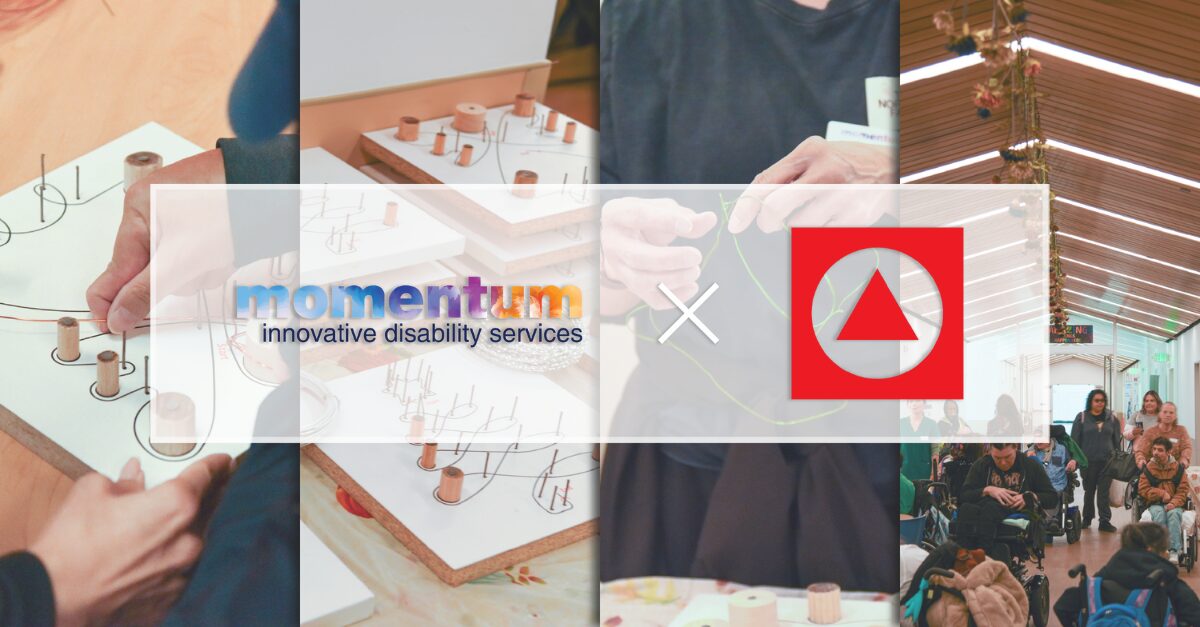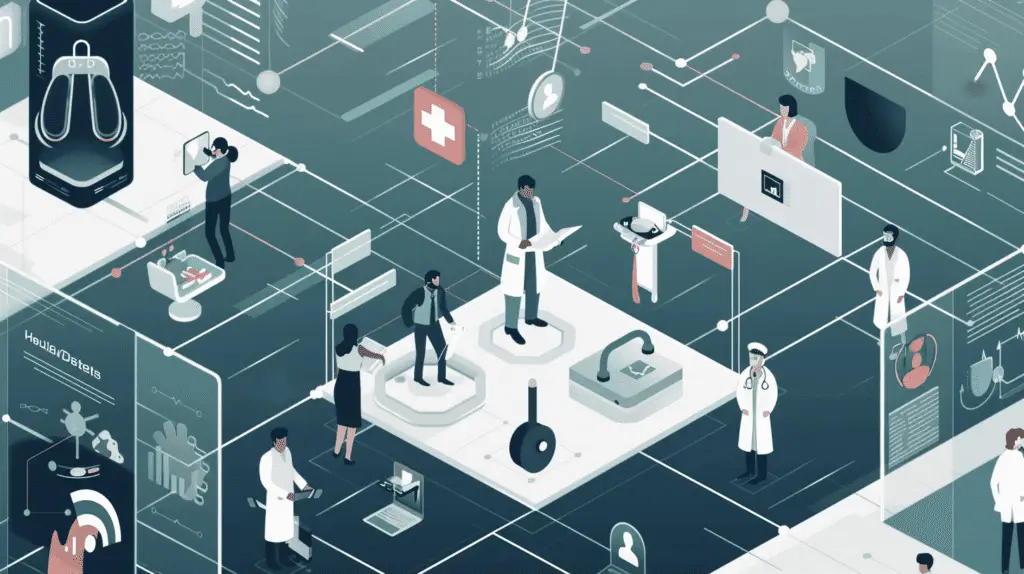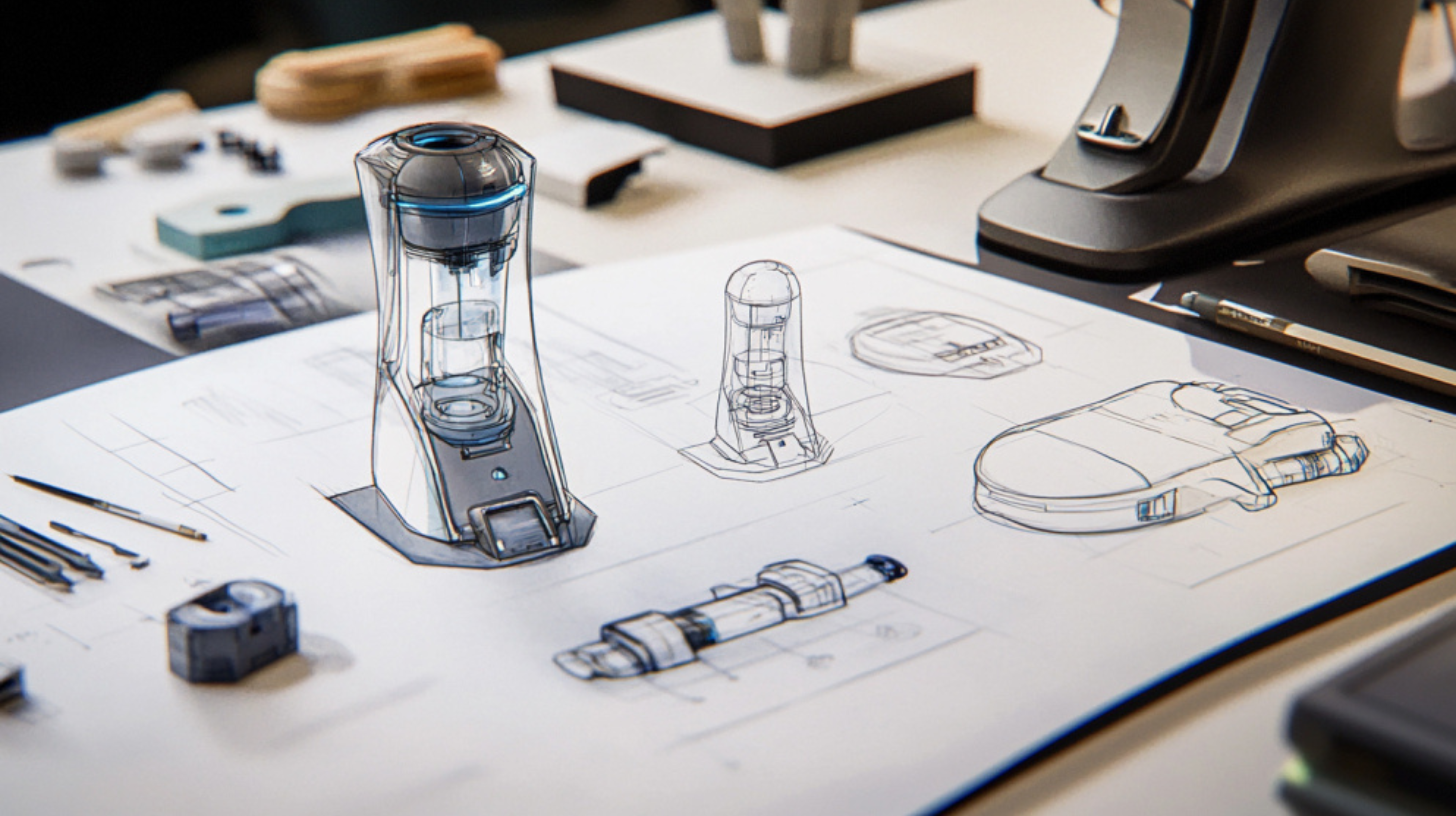In this second installment, Ravi Sawhney and our Creative Director, Lance Hussey, share their insights on overcoming the challenges for AI to reach its full potential in healthcare product design.
What obstacles are slowing down this progress, and how can we overcome them?
As AI continues to advance, its applications in healthcare and medtech product design are expanding at an unprecedented pace. Yet, despite its promising potential, the widespread adoption of AI in healthcare product design faces significant challenges.
Identifying the Barriers to AI Adoption
 The adoption of AI in healthcare and medtech product design is not without its obstacles. One primary challenge is the inherent conservatism in the healthcare industry.
The adoption of AI in healthcare and medtech product design is not without its obstacles. One primary challenge is the inherent conservatism in the healthcare industry.
Given the stakes—people’s health and lives—we must thoroughly vet any new technology before widespread implementation. This cautious approach ensures that AI applications in medtech are reliable, safe, and effective.
Another significant barrier is the issue of data privacy. The sensitive nature of healthcare data necessitates stringent protections to prevent breaches and misuse. Compliance with regulations like HIPAA is essential, but ensuring that AI systems adhere to these standards adds a layer of complexity to their development and deployment.
Bias in AI algorithms is another critical concern. If the data used to train AI systems is biased, the outcomes will reflect those biases, potentially exacerbating existing disparities in healthcare. Ensuring that AI systems are equitable requires rigorous testing and validation to identify and mitigate any biases in their decision-making processes.
The Role of Design and Innovation

Design and innovation play crucial roles in overcoming these barriers and driving healthcare innovation. Human-centered design, a methodology that prioritizes the needs, behaviors, and experiences of end-users, is essential in developing AI applications and medical technology that are ethical and effective. By incorporating feedback from healthcare professionals and patients, designers can create AI solutions that are both user-friendly and aligned with real-world needs.
Moreover, robust design thinking can address ethical concerns by embedding principles of transparency, accountability, and fairness into AI systems. This involves not only designing interfaces that are intuitive and accessible but also ensuring that the underlying algorithms are explainable and auditable. Such transparency helps build trust among users and stakeholders, which is critical for the adoption of AI in healthcare.
As we envision the future of healthcare, these practices will be pivotal in ensuring that AI-driven solutions and medical technology are both innovative and ethical.
Addressing Data Privacy and Bias
Protecting patient data is paramount in healthcare AI applications. Using anonymization and encryption techniques enhances data privacy and ensures personal information is not exposed. Additionally, implementing strict access controls and regular audits can help safeguard data integrity.
To address bias, it is essential to use diverse and representative datasets for training AI models. This helps ensure that the AI system performs well across different patient demographics and conditions. Continuous monitoring and updating of AI algorithms are also necessary to identify and correct biases as new data becomes available.
The Importance of Collaboration
 Collaboration between various stakeholders is key to overcoming the barriers to AI adoption in healthcare product development. Policymakers, healthcare providers, technology developers, and patients must work together to create a regulatory framework that supports innovation while protecting public interests. Such collaboration can also foster the development of standards and best practices for AI implementation, facilitating its integration into existing healthcare systems.
Collaboration between various stakeholders is key to overcoming the barriers to AI adoption in healthcare product development. Policymakers, healthcare providers, technology developers, and patients must work together to create a regulatory framework that supports innovation while protecting public interests. Such collaboration can also foster the development of standards and best practices for AI implementation, facilitating its integration into existing healthcare systems.
AI in Medical Device Design
Despite the challenges, the future of AI in healthcare is promising. Artificial intelligence in medicine has the potential to revolutionize diagnostics, personalize treatment plans, and improve patient outcomes. For instance, AI in medical diagnostics can analyze medical images with higher accuracy than human radiologists, leading to earlier and more accurate diagnoses. It can also predict patient outcomes based on historical data, helping doctors develop more effective treatment plans.
In the realm of medical device design, AI can optimize the design process by predicting user needs and preferences. This can result in innovative medical products and interfaces that are more intuitive and effective. Additionally, AI can facilitate the continuous improvement of healthcare products by analyzing user feedback and performance data.
AI has immense potential in healthcare and medical device design but faces significant challenges. By addressing issues of data privacy, bias, and user trust through robust design thinking and collaboration, we can pave the way for AI-driven innovations that enhance human well-being.
The Future of AI in Healthcare
 As we navigate these obstacles, the ultimate goal is to create AI applications that are not only technologically advanced but also ethical, equitable, and centered around the needs of patients. Through careful planning and a commitment to ethical principles, the promise of AI in healthcare can be fully realized, leading to a future where technology and human care work hand in hand to improve lives.
As we navigate these obstacles, the ultimate goal is to create AI applications that are not only technologically advanced but also ethical, equitable, and centered around the needs of patients. Through careful planning and a commitment to ethical principles, the promise of AI in healthcare can be fully realized, leading to a future where technology and human care work hand in hand to improve lives.
As we look at healthcare technology trends, addressing issues of data privacy, bias, and user trust through robust design thinking and collaboration can pave the way for AI-driven innovations that enhance human well-being.











